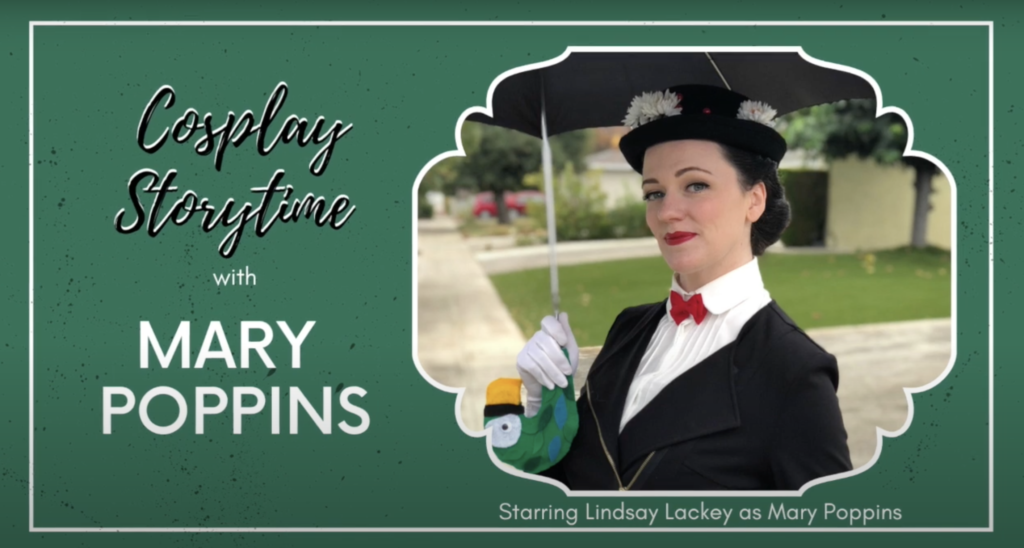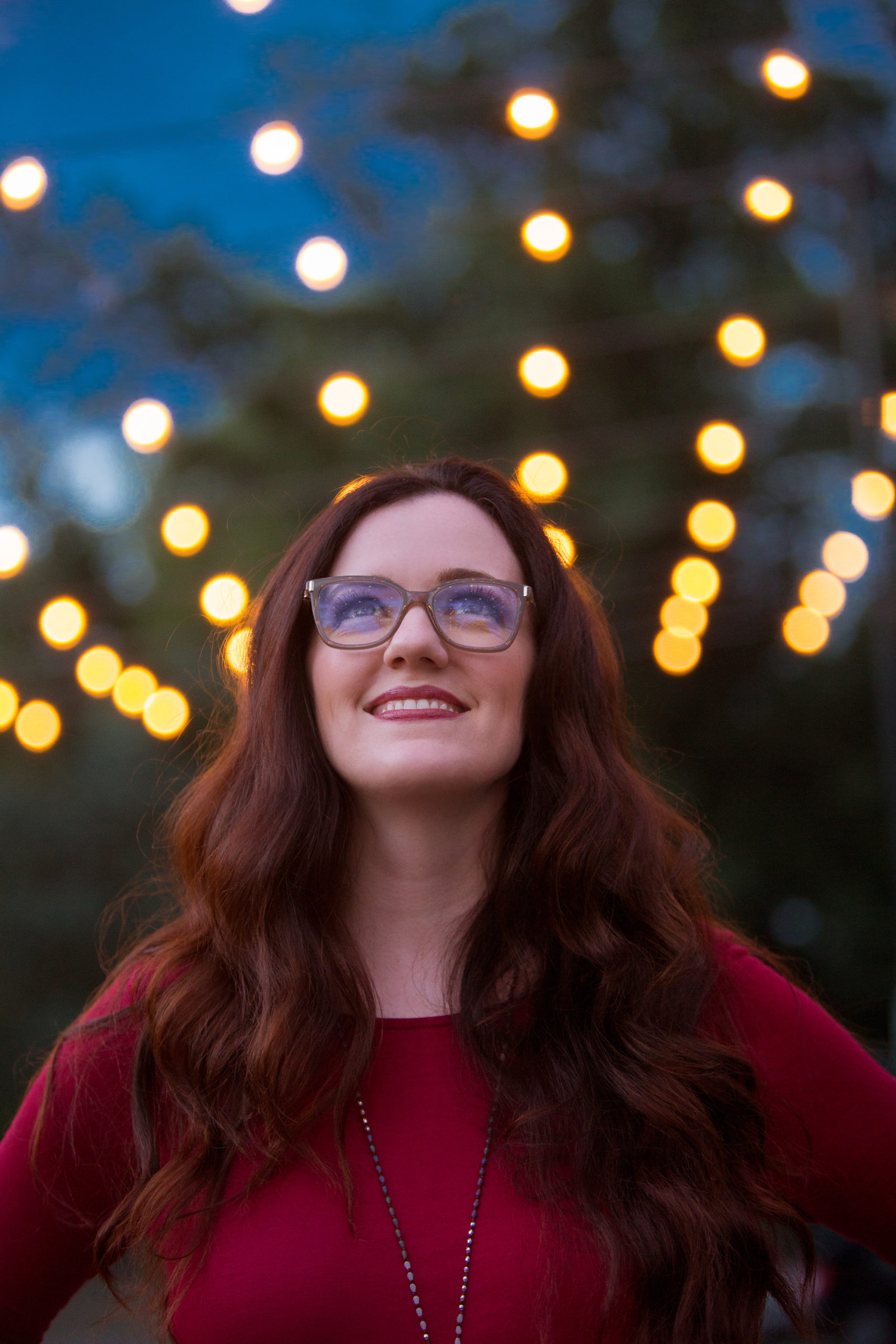interview by Kristi Wright

In All The Impossible Things, Lindsay Lackey tells a beautiful story about Red, a girl in search of a home where she fits. Lackey has now found her own perfect home as a middle-grade author. In the interview below, we ask her about craft and community. Next week, we’re excited to share an analysis of how Lackey seeded her novel with tension to maximize the reader’s page-turning experience.
KidLit Craft: What do you love about writing middle grade novels?
Middle grade is wonderful for so many reasons. It’s a time of life when we start asking a lot of questions, but we ask them because we’re curious, not necessarily because we’re cynical or doubting. It’s a time for exploration and adventure, but also a time for finding our place within our own families and communities. Independence is balanced by interconnectedness in a different way than stories for other age groups. Plus, middle grade novels can ask some of the hardest questions, can explore some of the toughest themes—grief, loss, death, illness, identity—yet still maintain a sense of hope and wonder that many novels for older kids and adults lack. I love that, within a middle grade novel, my characters can explore hard things, but can also play like the children they are.
KidLit Craft: Where did your idea for your debut novel come from?
About ten years ago, my aunt and uncle decided to become foster parents. They were both nearing retirement and had grown children and even grandchildren. Yet, instead of living the empty-nester lifestyle, they opened their home to kids who needed it. One day, my aunt was at the foster care agency and saw a little girl across the room. She had the sudden, unshakeable knowledge that that little girl would one day be her daughter. Sure enough, they eventually started fostering that girl and adopted her a few years later, and the seed for this story was planted.
I very intentionally did not make my main character, Red, similar to my cousin at all. I wanted to protect my cousin’s privacy and right to her own story. But the idea of an older couple becoming the family that fits just right for a child really struck me, and I knew it was a story that needed to be told.
KidLit Craft: Your main character is easy to love. Can you offer some tips for how to build a relatable/lovable character?
Thank you! I think there are several ways to help your readers love your characters, but here are two tactics I always trust in my own work.
First, you have to love your characters. They have to be someone you are eager to hang out with, day after day, page after page. They need to be interesting and human and lovable to you, or they will fall flat with a reader.
If you don’t like your own character, ask yourself why. Are they too moody? Do they have some trait that bugs you? If you’re writing an antihero, it might be hard to write someone you love. But loving a character is not the same as liking a character. You can dislike someone sometimes, but still love them, right? The same is true for your characters. But, if your dislike overwhelms your love, you need to figure out why and address the issue.
I struggled with the character of Wanda in All the Impossible Things. She is Red’s biological mother, and her struggles with addiction make her very unlikeable at times. In early drafts, the unlikeable-ness of her was overwhelming. Finally, I realized that I couldn’t relate to her at all, which made it hard for me to love her.
I decided to give Red and Wanda a moment, a memory, that is a real memory from my own childhood—a good one. That exercise broke Wanda’s character open for me in new ways, and I was finally able to see her vulnerability and tenderness and humanity. From that moment on, I loved her and was able to breathe life into her.
The second trick is this: other characters within your story need to love your main character, too. The way others treat our main character really informs a reader about that character. I don’t mean the characters who treat your main character badly. A bullied character can elicit pity from a reader, and that can be an important aspect of relatability. But if another character loves your main character, if another character thinks they’re special and shows it somehow, then your reader will love your main character, too.
It doesn’t have to be anything too big or complicated. Small moments of love go a long way.
For example, in the opening chapter of All the Impossible Things, Red is being removed from yet another foster home. Her caseworker, Ms. Anders, is there, and we see her interact with the foster mother, and we get a sense that Ms. Anders is protective of Red. But when Ms. Anders takes Red to the car, Red finds a package of peach gummy candy on the seat, “as always.” This moment solidifies the relationship between Ms. Anders and Red, and also tells the reader just how much Ms. Anders cares. And somehow this knowledge—that Ms. Anders loves Red—becomes a touchstone for the reader. If Ms. Anders loves Red enough to give her candy during hard moments, then we love her, too.

KidLit Craft: You write contemporary, but your book still feels as if it has strong world-building. What did you specifically do to give your readers a deep feeling of place in your novel?
I actually find world building tough and don’t love to do it—which is why I tend to abandon the fantasy novels I’ve started. World building is more fun for me when I am not starting from scratch.
All the Impossible Things is set in Colorado, which is where I was born and lived for most of my life. I love Colorado. I love its big, dramatic sky. I love the clear silhouette of the mountains to the west. I love the wacky weather that swings from one extreme to another in a matter of minutes. These are all elements of the world of Colorado that make it a very specific place in real life, as well as on the page. I made a conscious effort to include these particularities within my story, and I also tried to make these particularities both surprising and familiar.
For example, Colorado is a windy place. The east half of the state is plains, and the west half is steep, rugged mountains. This dynamic geography wreaks havoc on the air, sending cold mountain air rushing down across the plains while the warmer air swoops up over the mountains. This means two things: wind and storms.
I wanted to incorporate these elements into All the Impossible Things, and so as I was drafting the first scene, I wrote about the stormy weather outside the foster home that Red was leaving. Suddenly it hit me: Red herself was causing the storm. That realization not only set the true heart of the story in motion, it also gave me a firm sense of the world I was building. It made the setting particular and familiar, but in a surprising way.
As you work to build the world of your own story, I encourage you to look for the familiar aspects of the world that you can somehow breathe fresh, surprising life into. That will help make your world real to readers!
KidLit Craft: What craft advice do you have for authors who want to experiment with magical elements in their contemporary novels?
Magic, in my opinion, always has to mean something. There needs to be a purpose beyond the fact that it’s fun or interesting—especially when you’re using magic in a contemporary setting. I certainly don’t mean to say that you have to explain the origin of the magic—in fact, just the opposite! Magic’s origin in contemporary stories is, to me, less important and less interesting than magic’s meaning.
If you’re going to use magic in your story, then figure out its purpose. Is it practically convenient? Is there a metaphor behind it? Does it push your character into uncomfortable growth? The more of these boxes you can tick, the better. Magic, like a character, needs to have layers of complexity and nuance, otherwise it becomes contrived or trite. Think of your magic as a character, and learn its rules, function, and flaws.
KidLit Craft: How has craft study informed your writing?
I probably shouldn’t admit this on a craft blog…but I am not a person who intentionally studies craft very well or very often. In fact, it wasn’t until I became a part of the KidLit Craft community that I developed any intentionality in my own work.
That isn’t to say I haven’t studied craft at all. I did get a BA in Creative Writing, so of course I have a background in craft study to some extent. But what KidLit Craft focuses on has taught me a whole new appreciation for craft study.
Instead of theories of craft and instead of studying works that are wildly different from the books I write (such as classic literature), KidLit Craft looks directly at actual children’s literature. How do the greats like Katherine Paterson, Jason Reynolds, Jacqueline Woodson, Rebecca Stead and others do what they do? This community has taught me to look directly at my peers for inspiration and guidance, and this lesson has revolutionized craft study for me.
While I still do not examine craft with the academic precision of others, I do internalize a lot about the craft of books I love. I seek out books that accomplish something I am trying to accomplish—whether that’s lyrical prose or a solid mystery plot or an unreliable narrator—and I read them just for the experience of the story. Then I read them again, this time paying more attention to the elements I want to emulate.
While I was in the process of writing All the Impossible Things, I read books I thought were beautiful because I wanted to write something that was beautiful. I couldn’t have given you a clear definition of what “beautiful” meant to me then. I knew it had something to do with prose that was lyrical, with imagery that was surprising and vivid, and characters that evoked authentic emotion within me. But sometimes I found a book beautiful that wasn’t lyrical at all, or that was bleak in setting and tone. Why were these books beautiful?
I didn’t know. But I kept reading. I read books by Jandy Nelson and Kate DiCamillo, Rebecca Stead and Holly Goldberg Sloan. I read YA and middle grade, poetry and literary fiction. I read and reread, and I internalized the raw emotion of Nelson, the spare and poignant prose of DiCamillo, the rich characterizations of Stead.
I can’t give you practical steps as to how I studied their craft other than reading, rereading, and discussing these books with others in this community. Somehow, between internalizing their work and discussing my own, I was able to learn from them. Looking back, I see the ways these great authors have influenced my work in general and All the Impossible Things specifically. The best way I can describe that learning process is to say I learned by immersion.
KidLit Craft: What do you feel you’ve gained from being a part of the KidLitCraft community?
I’ve already mentioned how KidLitCraft has expanded my own appreciation for and approach to the study of craft in my work, and that is one of the greatest aspects of this community. But the greatest aspect is the community itself.
The people in the KidLit community in general and the KidLitCraft community specifically are easily the brightest, most curious, most engaging people I know. I love the deep sense of wonder writers of children’s books possess, and how we all—deep down—still believe in magic. The world is so often dark and stormy, but kidlit writers relentlessly gather around the flickering candles in the darkness. Together, we ask questions, we discover ourselves, we grow comfortable in the tension that exists between light and dark, hope and despair, love and loss.
Writing stories is, in itself, an enormous responsibility, and writing stories for children only magnifies that responsibility. I am encouraged and strengthened by the many people in this KidLitCraft community who take that responsibility seriously, yet also recognize the inherent fun, the joy that exists in writing for children. It is a community I treasure and am always grateful for.

Lindsay Lackey’s bestselling debut novel, All the Impossible Things, was named a Best Book of 2019 by the New York Public Library, the Denver Public Library, and A Mighty Girl’s website, among others. Before she became an author, Lindsay trained as an opera singer, worked in children’s and teen services at the public library, and for a major publishing house in publicity and marketing. Born and raised in Colorado, she now lives in the San Francisco Bay Area with her husband and their spoiled dogs. She absolutely believes in impossible things.
Find more about Lindsay at lindsaylackey.com, Twitter and Instagram @lindsaywrites. You can find her craft reviews on our site here: kidlitcraft.com/author/lindsay/.
Kristi Wright (co-editor) writes picture books and middle grade novels. Her goal as a writer is to give children a sense of wonder, a hopefulness about humanity, and a belief in their future. She is represented by Kurestin Armada at Root Literary. She is an active volunteer for SCBWI and a 12 X 12 member. Find her at www.kristiwrightauthor.com and on Twitter @KristiWrite.


COMMENTs:
0